Butoh, popular as the Japanese Dance of Darkness, became mainstream in the middle of the 21st century.
It’s an all-encompassing art that combines Buddhism’s empathy, transiency, selflessness, and modernism’s unpredictable, mischievous, and sometimes grotesque nature.
Unlike most dances, Butoh dance of darkness doesn’t focus on beauty and perfectionism.
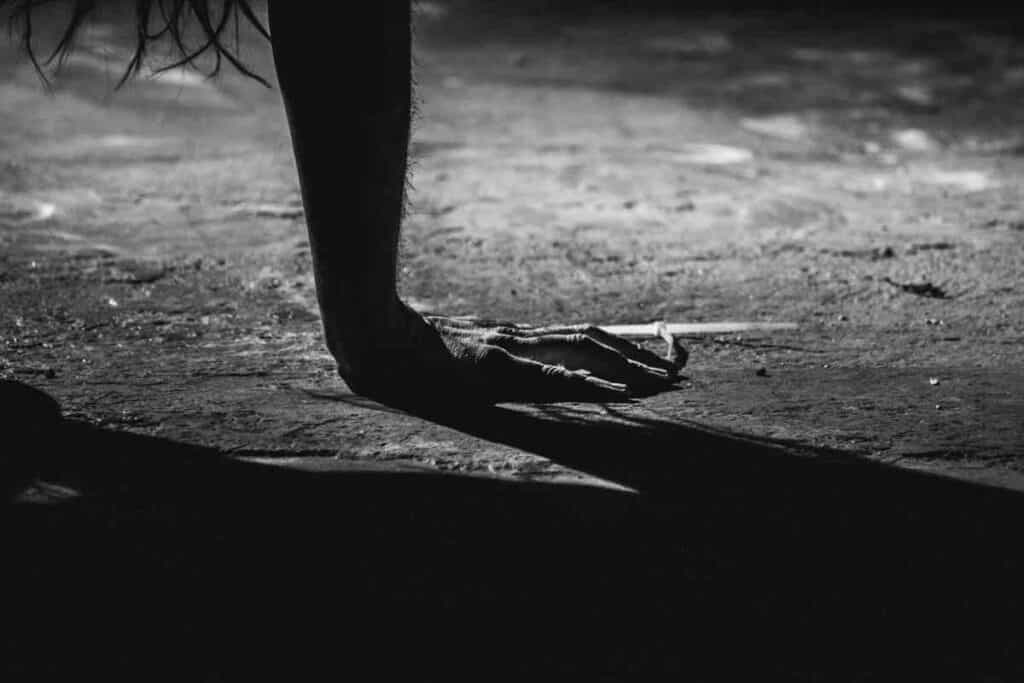
Instead, dancers move like they’re in a trance. For a novice, these movements will seem awkward – it’s likely to encounter dancers that seemingly celebrate death.
However, Butoh doesn’t disregard anybody, regardless of appearance -natural and organic beauty is appreciated.
Additionally – Butoh prioritizes improvisation over meticulous choreography. Rather than implementing what you practiced, Butoh encourages you to do whatever you like, so long as it conforms to the event’s theme.
For instance, you don’t have to dance while playing music’s rhythm; try something that matches the surroundings, etc.
Table of Contents
History of the Butoh Dance
Butoh started in 1959, a few years after the Second World War. Tatsumi Hijikata and Kazuo Ohno pioneered the dance in response to the Japanese dance scene, which Hijikata believed was copying western styles and ignoring the country’s history.
Hijikata created Butoh to counter the popularity of modern dance styles and ballet.
His objective was to form a new dance that embraced earthbound physique, squat, and people’s natural movements.
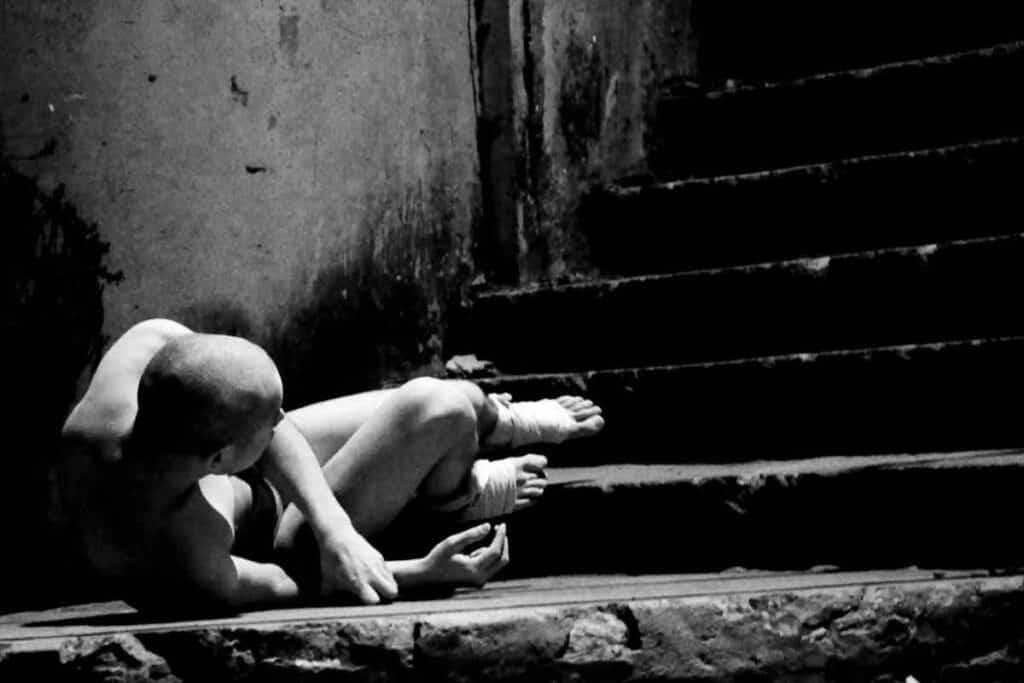
This birthed the Ankoku Butoh, which means the dance of darkness.
The dance involves crude physical gestures and rude moves, a contradiction of the understatement and refinement valued by the Japanese.
The first public Butoh dance, called Forbidden Colors, was performed at a dance festival in 1959. The dance was based on a novel of the same name by Yukio Mishima. Its theme focused on homosexuality, which is a taboo in Japan.
The performance ended with Kazuo’s son holding a live chicken between his legs, after which Hijikata chased him into the darkness.
This climax irked the audience and resulted in the labeling and subsequent banning of Hijikata for being an iconoclast.
Despite the ban, Hijikata didn’t stop using unconventional and unpopular styles in his dances.
He based most of his performances on the works of writers like Antonin Artaud, Comte de Lautréamont, Jean Genet, Marquis de Sade, and Yukio Mishima, overemphasizing darkness, moral decay, and macabreness.
Additionally, Hijikata explored the transformation of the human body into other forms, especially animals.
He also introduced a poetic choreographic language called Butoh-fu to help dancers transform into non-human states of mind.
Many regard Kazuo Ohno and Tatsumi Hijikata as the creators of modern Butoh.
In ‘Shades of Darkness,’ a book by Jean Viala and Nourit Masson-Sékiné, Hijikata is referred to as the architect of Butoh, while Ohno is recognized as its soul.
Different Styles
Later, the two developed unique teaching styles. Their students spread the skills worldwide, leading to the formation of groups like Sankai Juku, a famous Japanese dance crew located in North America.
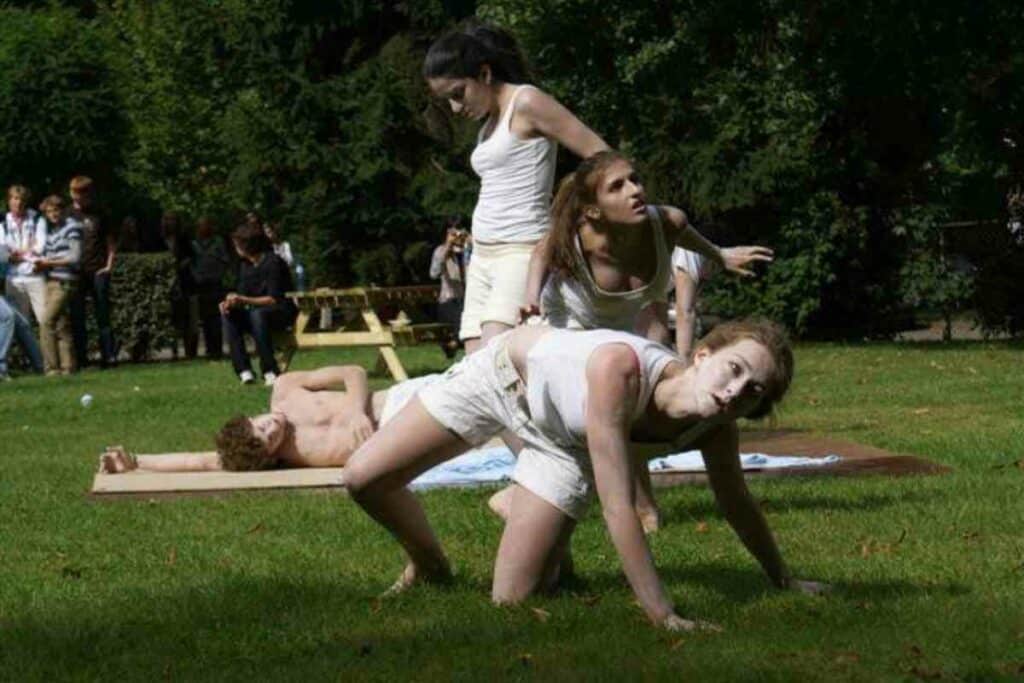
The most significant difference between the teaching styles was the approach.
Hijikata instilled fear and discipline in his students, while Ohno encouraged trainees to adopt a laid-back approach to learning.
Butoh gained popularity internationally in the 1980s. Dancers painted their bodies mainly in white, gold, and dark colors.
They wore little or no clothes, had shaven heads and screamed while performing.
One of the most notable performances involved Sankai Juku, where a dancer fell to death after one of the supporting ropes broke during the entrance.
The tragedy increased Americans’ awareness of the dance. Later, PBS ran a documentary that increased the dance’s popularity in the United States.
In the 1990s, Koichi Tamano delivered one of the most iconic Butoh dance performances at the top of the giant drum at the San Francisco Taiko Dojo, located inside the city’s Grace Cathedral.
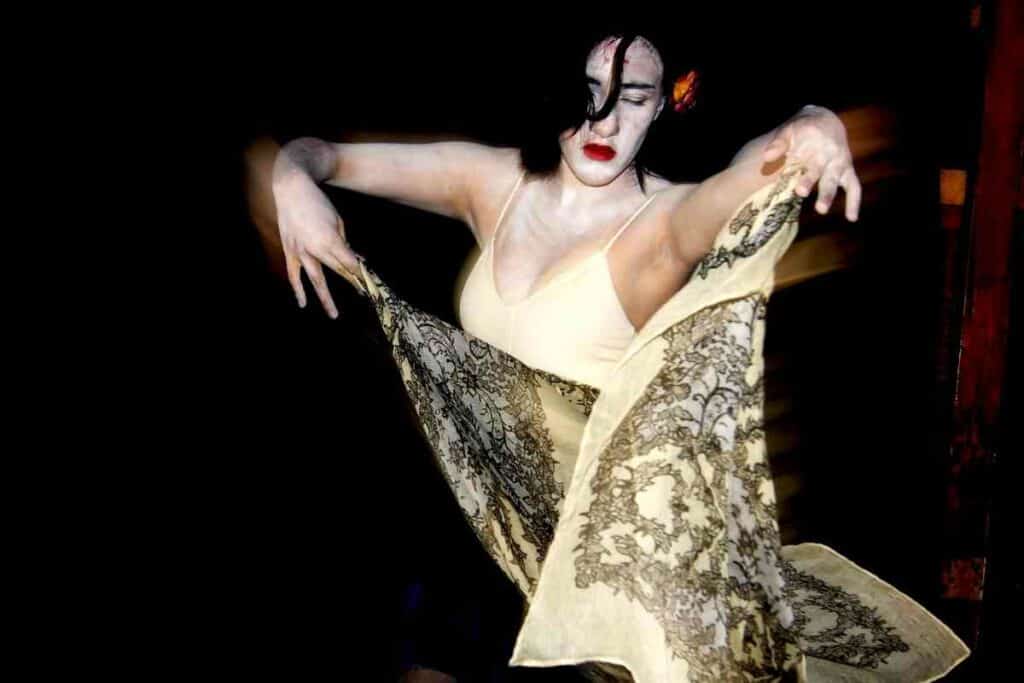
It was during an international religious festival attended by faithful from different countries.
Currently, Japan has a theater dedicated to regular Butoh dances. It’s called the Kyoto Butoh-kan.
Why Is It the ‘Dance of Darkness?’
The ‘darkness’ in Butoh refers to the emotions and thoughts in your subconscious mind. While dancing, you evoke these feelings and expose them to the surface for confrontation and transformation.
Butoh is more than a dance; it connects you to society. Moreover, it embraces your dark side – the emotion you would otherwise not like to experience.
Unfortunately, this appreciation of darkness distances most people, causing them to fear the Butoh dance.
Butoh Dance and Buddhism
Buddhism shares a lot with the Butoh dance. First, the dance encourages you to accept depressive emotions like anger, anxiety, fear, and sadness before letting go. This helps you deal better with negative feelings.
When practiced regularly, Butoh can help you attain transformation. It enables you to accept negativities without detachment, which is useful in developing compassion.
Over Time – You’ll confront too much pain, both yours and others, that you will learn how to empathize.
The Increasing Popularity of the Butoh Dance
Butoh is no longer practiced exclusively in Japan – it has fans and practitioners worldwide.
People appreciate it as an art of expressing emotions that they’d otherwise prefer to suppress, the feelings that are deeply buried into their subconscious.
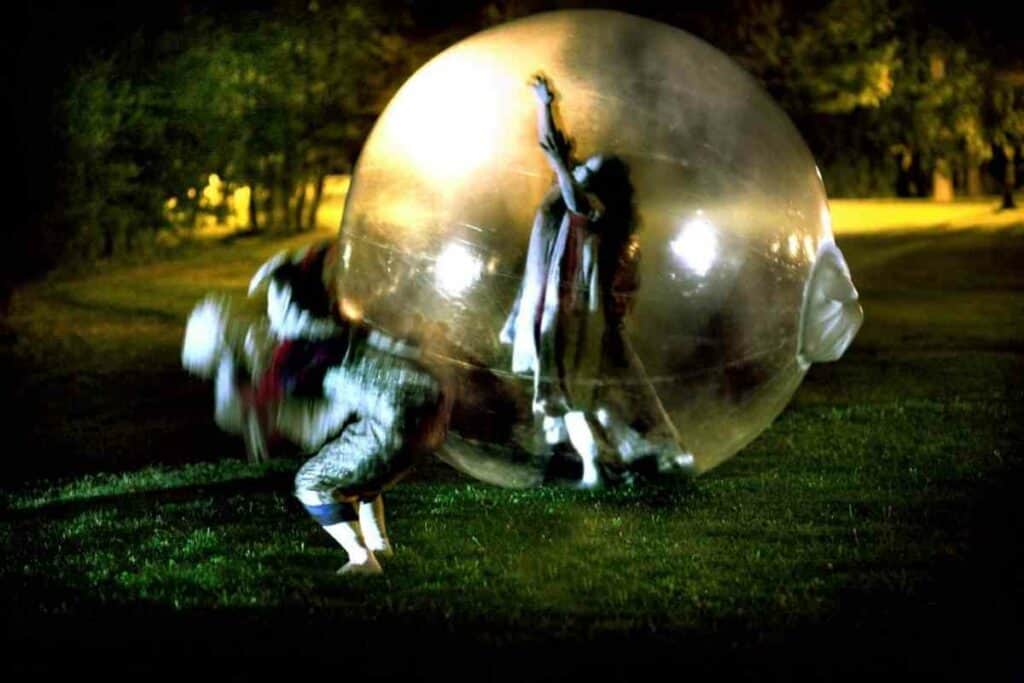
The dance uncovers such feelings and enables dancers to face and transform them.
However, international Butoh is different from the original dance. The Japanese have more awareness of body language and other non-verbal cues than westerners.
For instance, they’re more conscious of how low dancers are bowing, the order of entering the dancefloor, etc.
Butoh Exercises
Butoh exercises use a lot of imagery – you’ll spot insects, razorblades, threads, water jets, and several unusual things dancers use during their acts.
In addition, most exercises focus on moving the whole body from one source to another instead of moving specific body parts.
Sometimes, dancers feel intense pain and experience bodily strains. However, Butoh enthusiasts believe pain, starvation, and sleep deprivation are parts of the dance’s history.
They further affirm that the duress helps to improve movement cues, knowing that the cues are more visceral and intricate than other dancing styles.
Most Japanese exercises are associated with specific body shapes and postures. On the contrary, westerners don’t assign specifics to any activity.
This indicates that westerners consider Butoh as a particular state of mind that infects the body directly and indirectly, while the Japanese link it to specific movements and spirituality.
That Said – Both the Japanese and Westerners don’t choreograph Butoh dances. The timing and moves aren’t predefined; the dancers do as their inner, obscured emotions tell them.
Butoh Dance in Popular Culture
Over the years, Butoh dance has been featured several times in popular culture. Here are some instances.
- Flirt, a 1995 movie by Hal Hartley
- Baraka, a 1992 experimental documentary by Ron Fricke
- Madonna’s video clip for the song ‘Nothing Really Matters.’
- Bust a Groove 2, a 2000 PlayStation game
- The Weeknd’s video clip for the song ‘Belong to the World’
- The Witch, a 2015 horror film
Frequently Asked Questions about Butoh Dance
Why do butoh dancers look like zombies?
Death is a common theme in Butoh dance culture. Some gestures are grotesque from their beginning after the Second World War.
Tatsumi Hijikata, one of the pioneers, has previously stated that Butoh is an upright, moving corpse and admitted to having visions dancing with the dead.
Kazuo Ohno, the other founder, was a prisoner of war who saw many of his friends die in action. But, instead of fearing death, he embraced and fell in love with death.
Why do people misunderstand butoh?
The primary reason for misunderstanding Butoh is that it originates from Japan. Additionally, some people consider the dance moves strange and absurd.
The dance also elicits fear, exposes the dark side of human beings, and brings out what many people don’t like confronting.
Is butoh related to zen practice?
Butoh dance is similar to Zen because both encourage you to acknowledge negative feelings like anger, anxiety, fear, and sadness and let them go.
However, Butoh accomplishes its objectives through movement, while Zen meets its goals through sitting.
Also, Butoh is more energetic than Zen since you feel the ‘charges’ released by the emotions as they move from your subconscious to the outside world.
Does butoh make you happy?
Although dancing makes you feel better by eliminating negative feelings, it doesn’t make you happy.
Instead, you get a sense of satisfaction by acknowledging, accepting, and having compassion for your pain.
Wrapping Up: The Future of Butoh Dance
Butoh will likely continue evolving as it has since its inception. Why? First, more foreigners practice the dance than the Japanese.
Therefore, you can find many Butoh trainers outside Japan, especially in America.
Secondly, Butoh is becoming an international form because of the increased connectivity resulting from internet use.
It’s not long until Butoh spreads to all continents worldwide, including Africa, South America, Oceania, Europe, and the rest of Asia.
Lastly, the benefits of the Butoh dance make it a worthwhile practice, regardless of its grotesqueness.
Many people would welcome a chance to access negative feelings hidden in their subconscious minds and get rid of them.
You Might Also Read
- 12 Things Tourists Should NEVER Say in Japan
- Kissing Robot: Exploring the Popularity of the Chinese Kissing App
- Unlocking the Secret Dating Rituals Only Locals Know in Japan
- Samurai Armor: Ancient Protection for Japan’s Elite Warriors
- 10 Amazing Facts About Schools in Japan: Unique Traditions and Educational Practices
- Where can you see snow monkeys in Japan: Best locations and viewing tips









